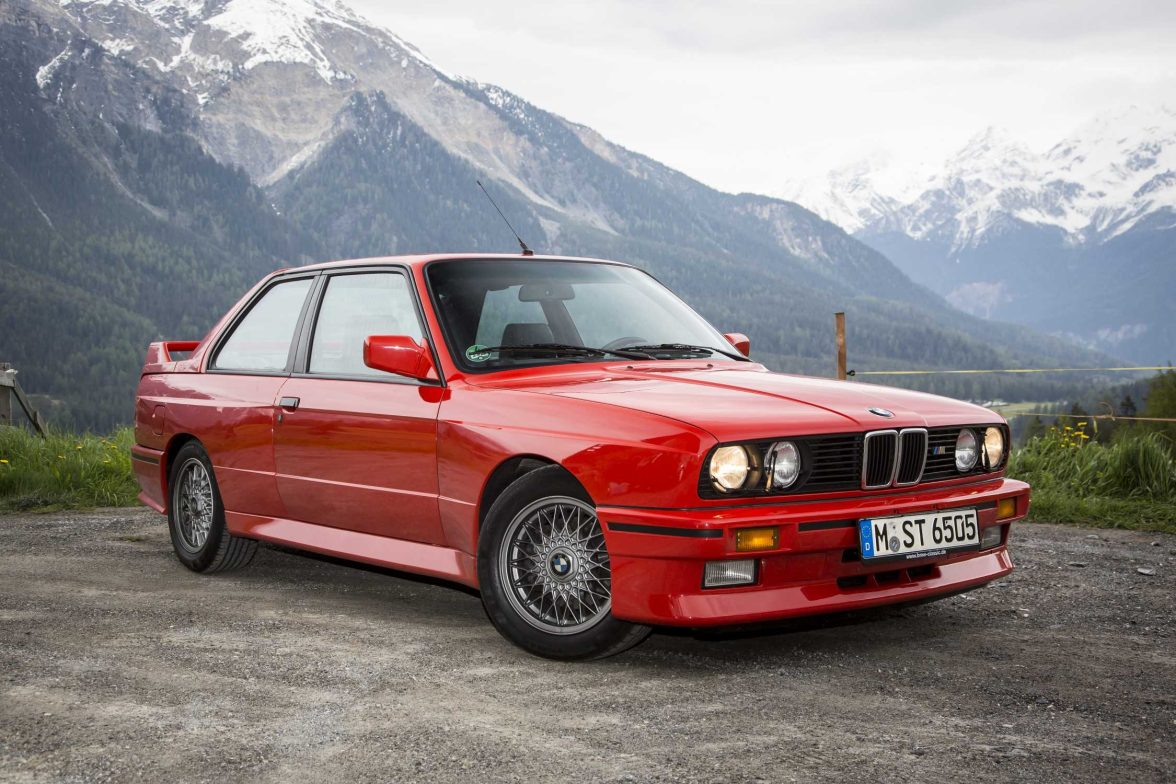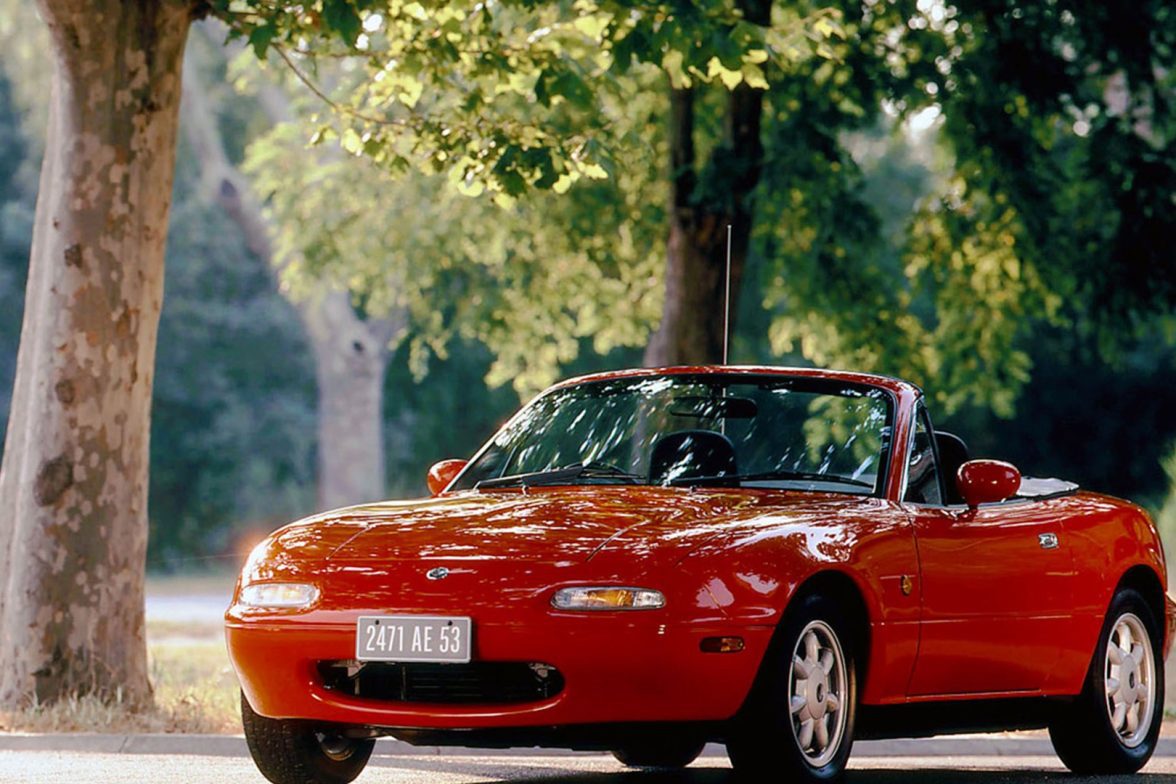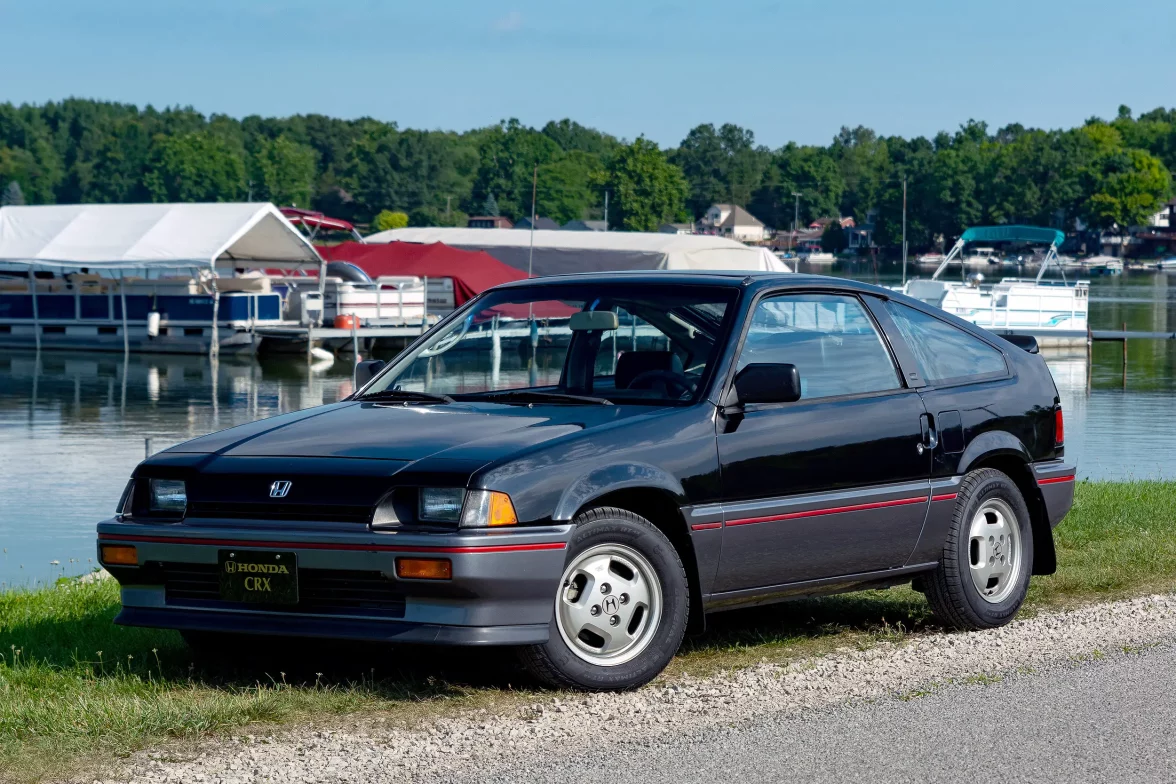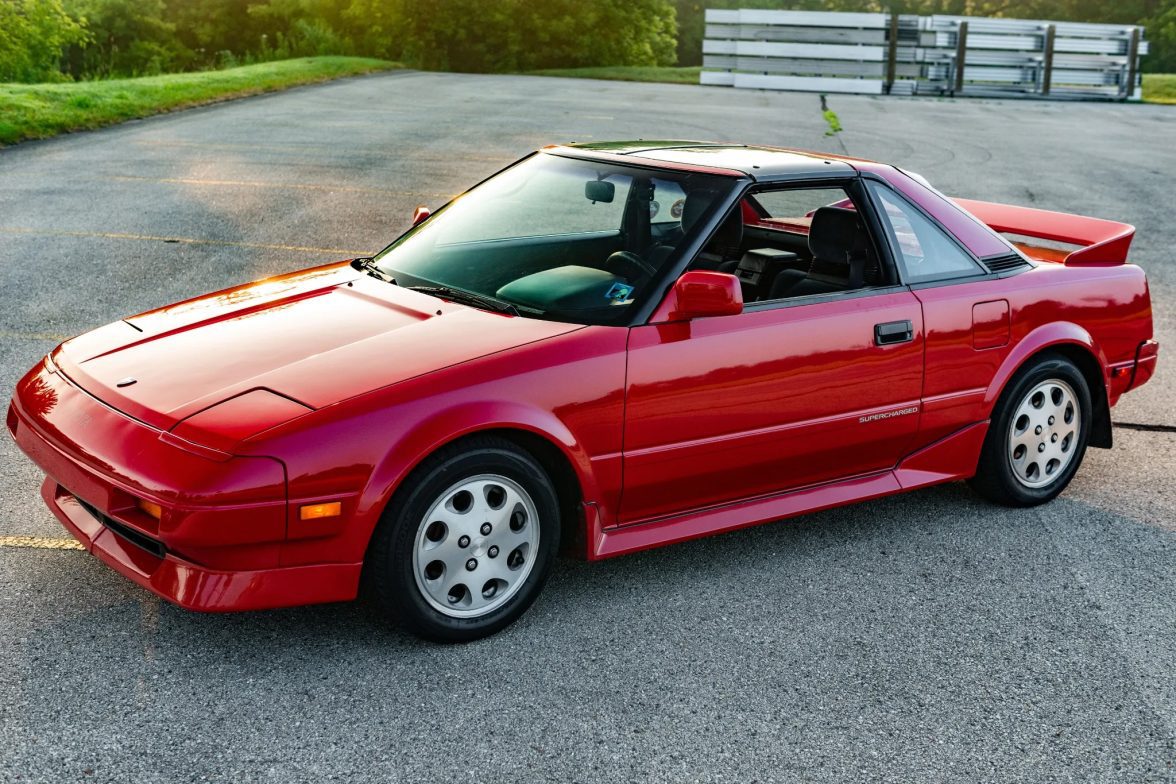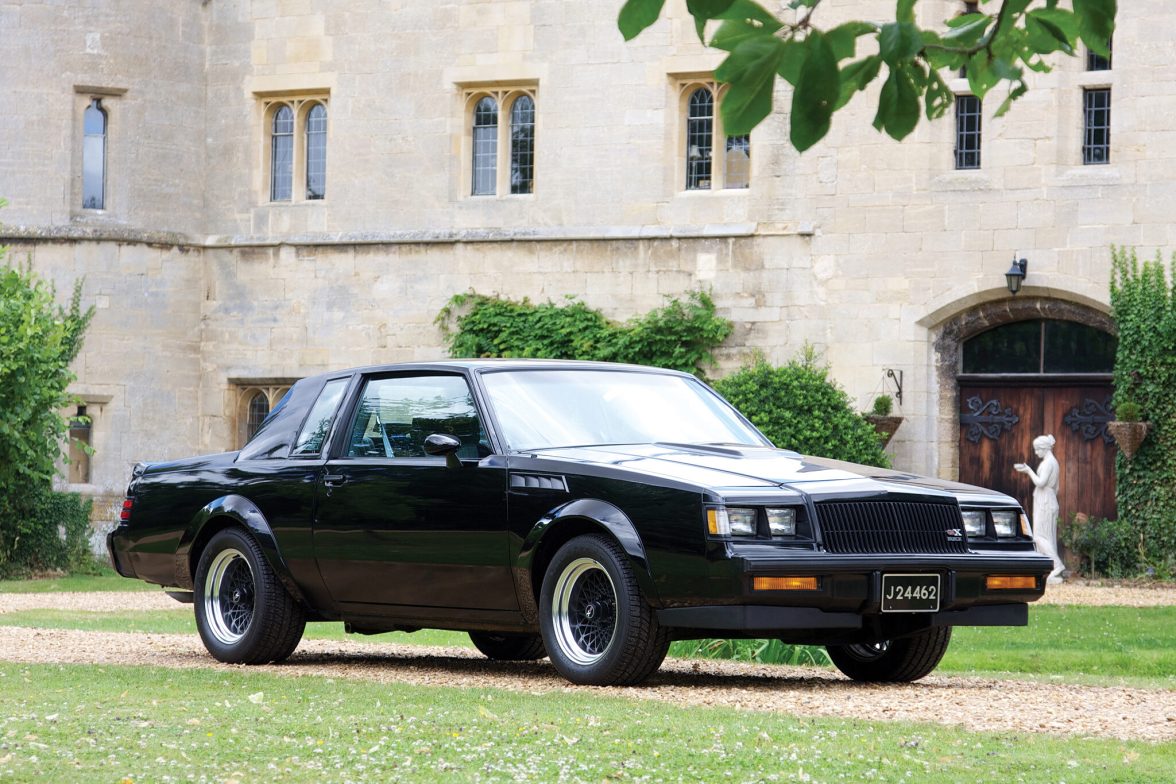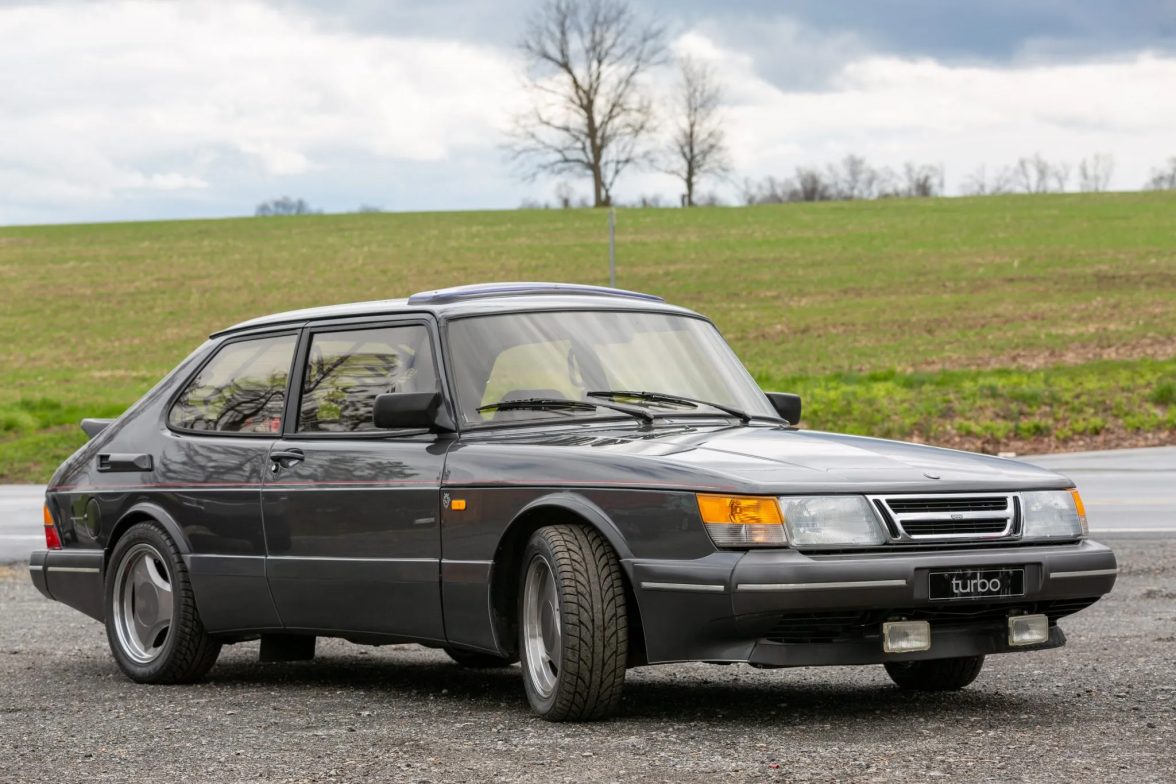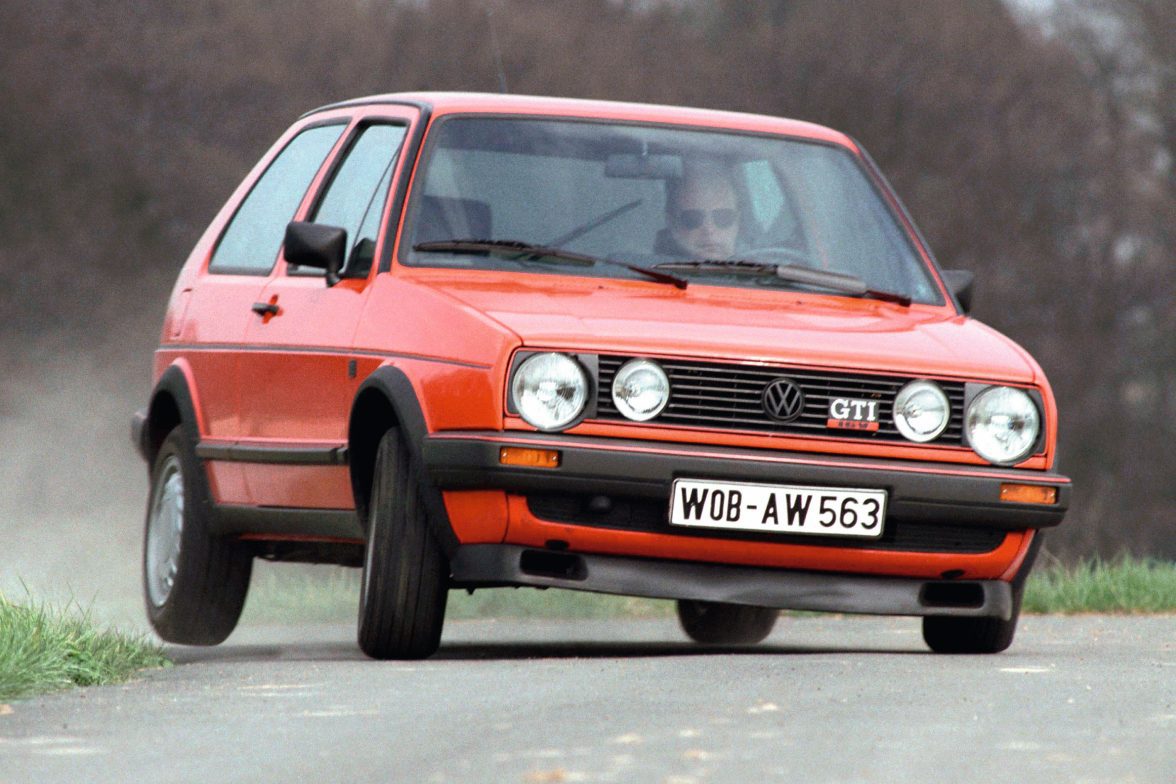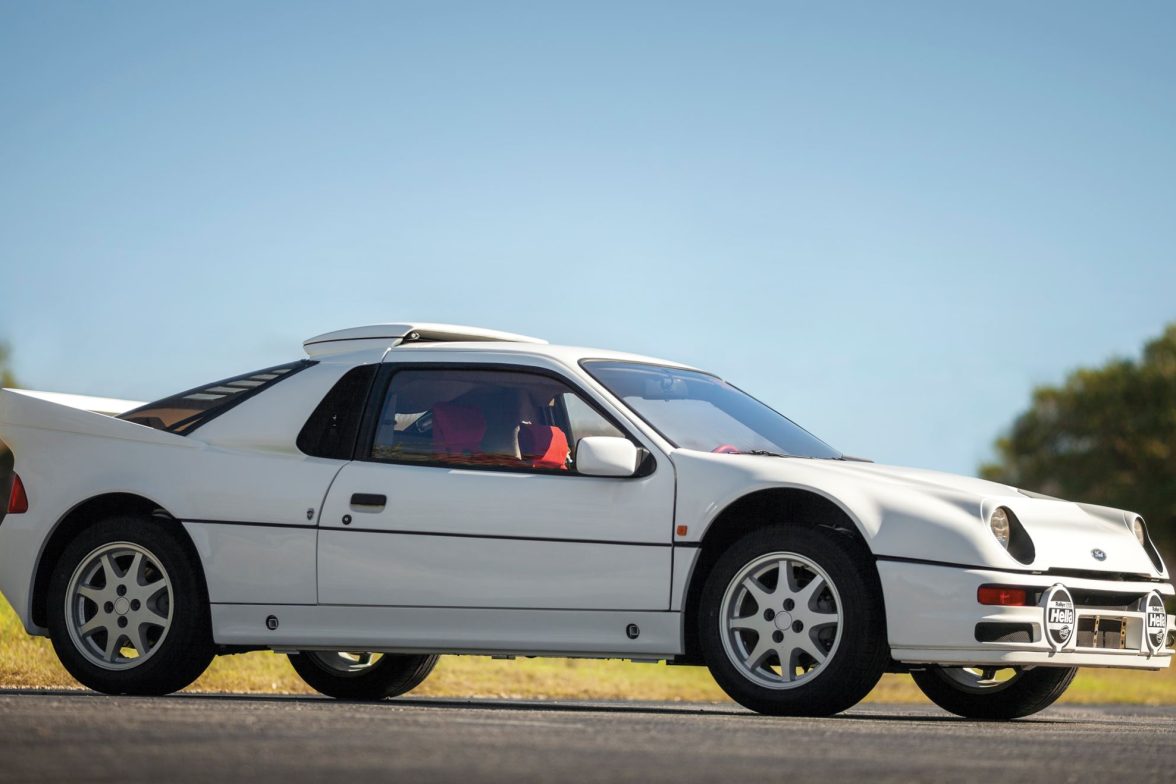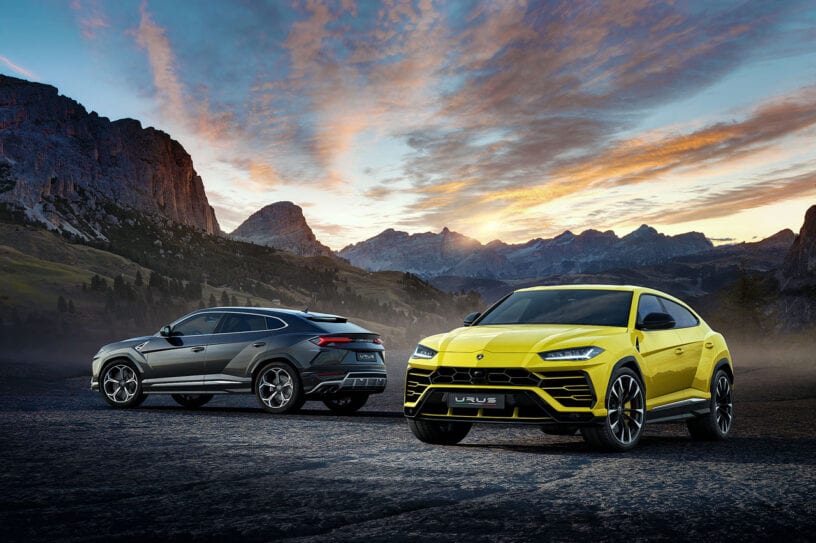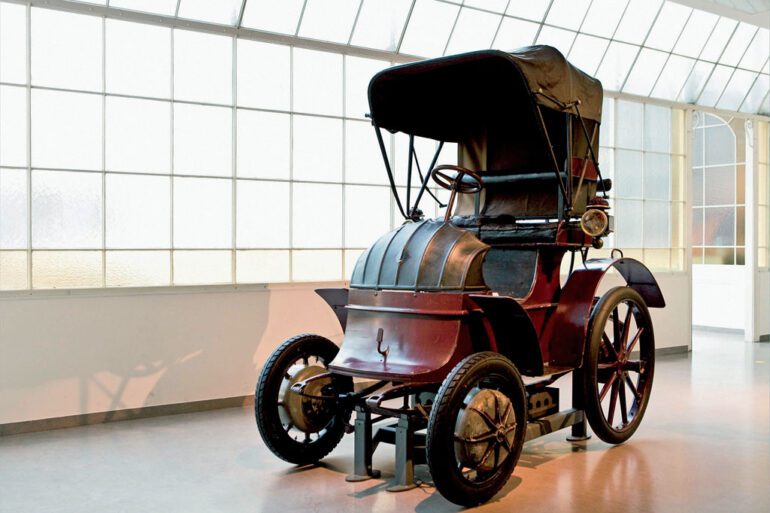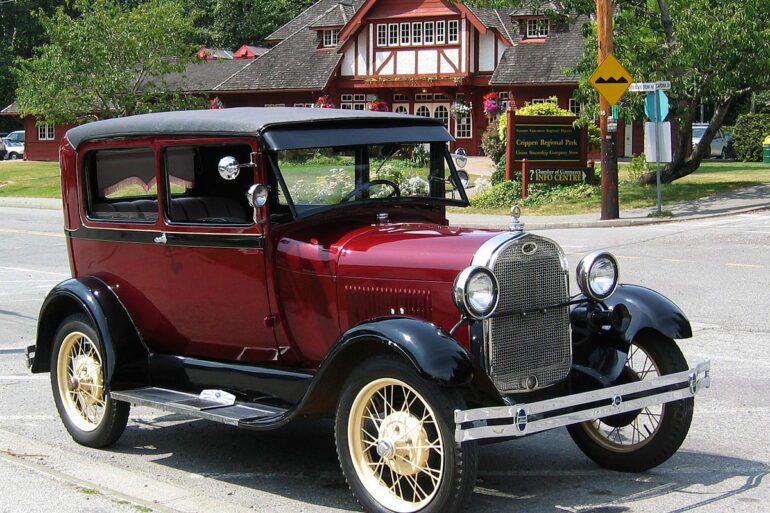The Best Sports Cars Of The 1980s
Updated December 2023 by Eduardo Zepeda
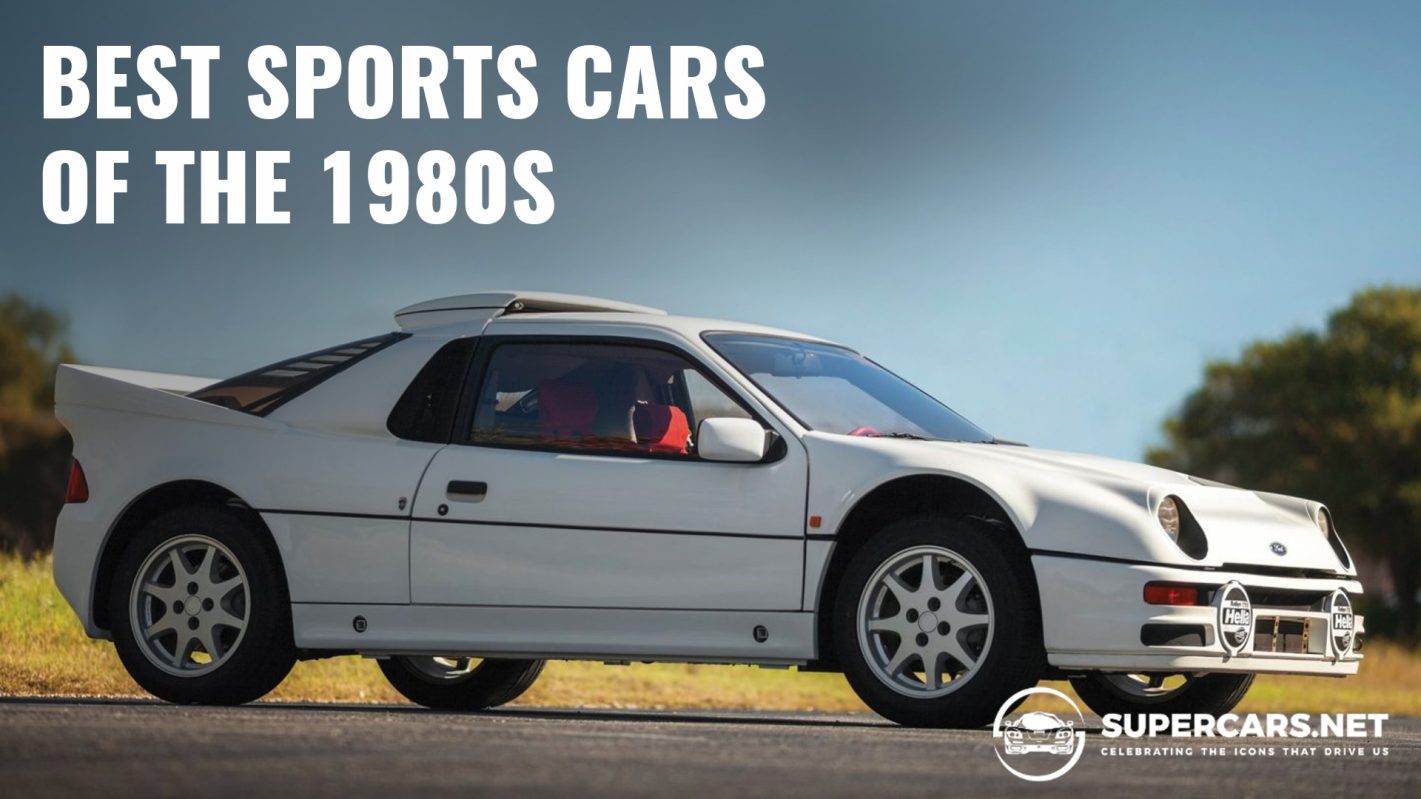
Visceral Power And Timeless Design Characterize These Fantastic 1980s Sports Cars
About Our Selections
Sleek designs and unapologetic horsepower—the 1980s weren't just a decade; they were a high-octane joyride. In this article, we're revisiting the vehicles that defined a golden age of speed and style.
Forget your Teslas and hypercars—we're talking raw, visceral machines. From the game-changer Audi Sport Quattro to the muscle of the Buick GNX, these cars were rolling testaments to the pursuit of automotive nirvana.
We'll explore these iconic machines, delving into their roaring engines, head-turning designs, and the sheer driving exhilaration they deliver. We're about to peel back the time capsule and rediscover the best sports cars the 1980s ever gave us.
1988 BMW M3 E30
A seminal homologation
Why We Picked It:
For many fans, the incomparable charm of the first-ever M3 model explicitly designed for the homologation of Group A touring vehicles is impossible to ignore. The legendary reputation it has earned for technical excellence and top performance is well-deserved, thanks to its engineering and racing history.
An M10 block and a four-valve head from an M5's S38 straight-six combine to form the 'S14,' a small but sturdy four-cylinder engine found in the M3.
With its 200 hp and 176 lb-ft of torque, the engine is paired with a dogleg five-speed manual transmission. Its distinctive features, such as its separate throttle bodies, made it a top-tier racing and street engine.
Superior handling was a byproduct of the E30 M3's chassis and suspension tuning. Its responsiveness and balance on the road and track made driving a delight.
Specifications:
Price: $50,000-$100,000
Engine: 2.5L Inline-Four
Power: 200 hp
Torque: 177 lb-ft
Transmission: 5-Speed Manual
Curb Weight: 2,866 lbs
Highlights:
Paul Bracq was the vehicle designer, incorporating numerous recognizable BMW design elements, such as the kidney grille and the Hofmeister kink. At only 0.32, the vehicle's drag coefficient is relatively low.
The BMW M3 E30 from 1988 was among the first cars to feature a widebody kit. Among other innovations, it had a four-wheel independent suspension and a limited-slip differential.
Learn More:
1984 Audi Sport Quattro
The game changer
Why We Picked It:
The Audi Sport Quattro transformed street cars and racing thanks to its innovative design and cutting-edge technology. When it debuted in 1984, the Audi market was radically changed.
A standout feature of the Audi Sport was the quattro all-wheel drive system. This technique improved the car's remarkable handling, stability, and traction, making it a competitive contender on highways and rally stages.
In the Sport Quattro, a five-cylinder turbocharged engine generated 258 pound-feet of torque and 306 horsepower. With its thrilling acceleration and enhanced performance due to the mix of turbocharging and all-wheel drive, Audi's engineering prowess was evident.
Carbon fiber and Kevlar, two lightweight materials, were used in constructing the Audi Sport Quattro. This focus on design improved handling and agility, which led to improved performance.
Specifications:
Price: $600,000-$1,000,000
Engine: 2.1L Turbocharged Inline-Five
Power: 300 hp
Torque: 258 lb-ft
Transmission: 5-Speed Manual
Curb Weight: 2,862 lbs
Highlights:
Hartmut Warkuss created the Audi Sport Quattro with a wide body, a large air intake, and a sloping tail end that achieved a drag coefficient of just 0.30.
The Audi Sport Quattro was among the first vehicles to offer a permanent all-wheel drive system with its unique inline-five-cylinder configuration and turbocharged engine.
Learn More:
1989 Nissan Skyline GT-R R32
The return of the GT-R badge
Why We Picked It:
The GT-R brand was left unused for 16 years in a Nissan storage cupboard until it was stunningly revived in August 1989. The R32 is a stylish, functional coupe worthy of its racing history. The R32 is a precision instrument. Its lightweight construction, stiff suspension, and well-balanced chassis make it incredibly agile and responsive.
The R32's ATTESA E-TS all-wheel drive system was revolutionary for its time, providing incredible grip and handling in all conditions. This advanced system could distribute power 50:50 between the front and rear axles or send up to 100% of the power to the rear wheels for a more playful driving experience.
On paper, the R32 was rated at 276 horsepower because of the controversial Gentleman's Agreement from 1989. However, it's well known that it yielded more than 300 horsepower (323 horsepower in the Nismo model).
Specifications:
Price: $30,000-$55,000
Engine: 2.6L Twin-Turbocharged Inline-Six
Power: 276 hp
Torque: 260 lb-ft
Transmission: 5-Speed Manual
Curb Weight: 3,153 lbs
Highlights:
The R32's boxy shape is functional and aerodynamic, and the iconic quad taillights are instantly recognizable. It's a car that looks just as good today as it was first released.
The RB26DETT engine is known for its incredible tunability, with some tuners pushing power well beyond 1,000 horsepower.
Learn More:
1989 Nissan Skyline GT-R R32
1989 Mazda Miata (NA)
The quintessential Japanese roadster
Why We Picked It:
Introduced in 1989, the MX-5, also known as the Miata first-generation (NA), is a thrilling sports car with a low to the ground notably influenced by the Lotus Elan.
The steering feel of the MX-5 was as good as it gets for a sports vehicle, especially in manual, non-power steering versions like this one. The Miata's excellent manual gearbox, which has short throws and is smooth and pleasurable to drive in any weather, is one of its best features.
A 1.6-liter, four-cylinder, twin-cam, sixteen-valve engine powers the NA Miata. Redlining at 7,000 rpm, this little engine generates 100 lb-ft of torque and 116 horsepower.
While the Miata might not be the fastest or most powerful car on the road, it excels in the area that truly matters for many drivers: pure, unadulterated driving enjoyment. It's a reminder that the best cars aren't just about numbers but the emotional connection they create with the open road.
Specifications:
Price: $6,000-$15,000
Engine: 1.6L Inline-Four
Power: 116 hp
Torque: 100 lb-ft
Transmission: 5-Speed Manual
Curb Weight: 2,160 lbs
Highlights:
The NA Miata prioritized driving experience over brute force. It's a lightweight, rear-wheel-drive roadster that offers unadulterated driving pleasure through responsive handling and direct feedback.
Unlike some exotic sports cars, the Miata is known for its reliability and affordability because of its simple design and lack of complex powertrains.
Learn More:
1985 Honda CRX Si
Pure hot hatch fun
Why We Picked It:
In 1985, Honda debuted the CRX Si, an upgrade to the conventional CRX that used fuel injection instead of carburetor technology. The standard CRX had a 1.5-liter, four-cylinder engine. The horsepower was raised from 76 to 91 with this upgrade.
The 1.6L B16A engine in the Si packed a surprising punch for its displacement; it felt lively and responsive, especially with the smooth-shifting 5-speed manual transmission. The high-revving nature added to the sporty character.
The CRX Si's hydraulic steering system provided excellent feedback and feel for the road. Every turn of the wheel translated into an immediate car response, making the driving experience incredibly engaging and connected.
Its lightweight agility, peppy engine, communicative steering, practicality, and affordability made it an exceptional car that offered pure driving fun. It's no wonder it remains a beloved classic among enthusiasts.
Specifications:
Price: $11,000-$16,000
Engine: 1.6L Inline-Four
Power: 105 hp
Torque: 98 lb-ft
Transmission: 5-Speed Manual
Curb Weight: 2,200 lbs
Highlights:
Unlike many sports cars, the CRX offered the practicality of a hatchback. This made it versatile and capable of handling day-to-day tasks, adding to its appeal as a daily driver with a sporty edge.
Thanks to its compact size and clever engineering, the CRX Si is incredibly light and agile. This translated to razor-sharp handling, quick acceleration, and a go-kart-like feel.
Learn More:
1985 Honda CRX Si @ Hagerty
1988 Toyota MR2 Supercharged
A delightful midship runabout
Why We Picked It:
Even though it's not a supercar, it certainly looks like one. The Toyota MR2, also known as the AW11, was Japan's first car to feature a rear, mid-mounted engine.
Unlike most Toyota's, the MR2 adopted a mid-engine layout, placing the engine behind the driver and seats. This configuration gave the car excellent weight distribution and balance, leading to exceptional handling and agility. It felt more like a European sports car than a Japanese one.
Toyota chose to use a Roots-style supercharger. The redesigned blower and air-to-air intercooler increased the MR2's peak outputs by 29 and 44 percent, respectively, to 145 horsepower and 140 pound-feet of torque.
The 1986 Toyota MR2 provided a fun and affordable introduction to mid-engine sports cars, making it an ideal vehicle for a driving enthusiast. Its distinctive look, lightweight build, and nimble handling made it stand out from other sports cars of the time.
Specifications:
Price: $10,000-$20,000
Engine: 1.6L Inline-Four
Power: 145 hp
Torque: 140 lb-ft
Transmission: 5-Speed Manual
Curb Weight: 2,600 lbs
Highlights:
The AW11, or the MR2, was intended to be a small, economical sports car. It had a transversely mounted inline-four engine, four-wheel disc brakes, and front and rear suspension with MacPherson struts.
The MR2 had a sleek, aerodynamic appearance, pop-up headlights, and a compact, wedge-shaped design. Its sharp edges and angular lines typified the design trends of the 1980s.
Learn More:
1987 Buick GNX
A limited-edition supercar killer
Why We Picked It:
The 1987 Buick GNX Grand National was a muscle car unlike any other. This limited-edition beast, built with McLaren, was the ultimate send-off for the Grand National lineage, packing a mean punch under its blacked-out hood.
Its 3.8L V6, boosted by twin Garrett turbos, pumped out a seriously underrated 276 horsepower (rumors suggest closer to 300) and 360 lb-ft of torque. 0-60 in 4.7 seconds.
Stepping inside was like entering a fighter jet cockpit. Stewart-Warner gauges kept tabs on the turbo's fury, while Recaro seats held you snug during G-force-inducing sprints.
Forget your grandma's Buick. The GNX sported aerodynamic tweaks, wider tires, and suspension upgrades straight from McLaren, making it a true corner-carving demon.
Only 547 GNX models ever roamed the streets, each individually numbered and dripping with black paint and gold accents. Owning one was like joining a high-octane club.
Specifications:
Price: $80,000-$200,000
Engine: 3.8L V6
Power: 276 hp
Torque: 360 lb-ft
Transmission: 4-Speed Automatic
Curb Weight: 3,474 lbs
Highlights:
The specific transmission used in the GNX was the Turbo-Hydramatic 200-4R, a popular automatic transmission in various General Motors vehicles during that era.
The Garrett T-3 turbocharger was paired with a ceramic-coated intercooler and a high-low exhaust system. Suspension included a torque arm, a Panhard bar for the rear axle, and 16-inch alloy wheels.
Learn More:
1988 Saab 900 Turbo
A quirky Swedish sports car
Why We Picked It:
The 1988 Saab Turbo was a quirky, aerodynamic marvel from Sweden that carved its unique path in high-performance cars.
At its heart, the 1988 Saab Turbo boasted a 2.0L turbocharged engine, pumping out a respectable 160 horsepower and 206 lb-ft of torque. Not mind-blowing numbers, but the way it delivered power was pure Saab: a progressive surge with a delightful turbo whoosh, pushing you back into the snug bucket seats.
The Saab Turbo embraced its boxy heritage, using its shape to its advantage. The sloping windshield and Kammback rear minimized drag, while the integrated spoiler provided stability at high speeds.
The Saab Turbo, with its independent suspension and front-wheel drive, could handle corners with surprising agility. It wasn't a razor-sharp scalpel, but carved-through bends with a predictable grip and a playful demeanor.
Specifications:
Price: $13,000-$30,000
Engine: 2.0L Turbocharged Inline-Four
Power: 160 hp
Torque: 206 lb-ft
Transmission: 5-Speed Manual
Curb Weight: 2,624lbs
Highlights:
The Saab 900 Turbo has safety features like self-adjusting brakes, crumple zones, and even the world's first heated driver's seat. These features spoke volumes about Saab's ethos.
The 900 Turbo wasn't the fastest or most luxurious car, but it offered a quirky, practical, and surprisingly fun driving experience that resonated with a dedicated group of enthusiasts.
Learn More:
1984 Volkswagen MK2 GTI 16v
The continuation of an icon
Why We Picked It:
The Volkswagen GTI is a hot hatch legend that ignited a revolution. The GTI's fuel-injected, 16-valve 1.8L engine, with its zippy 127 horsepower and 123 lb-ft of torque, transformed the humble Golf into a sporty sprite. It wasn't a muscle car, but its peppy performance and sharp handling made every driver smile.
The GTI's secret weapon was its lightweight construction and taut suspension. It hugged corners with nimble precision, carving through twisty roads with a playful, responsive feel. This agility, combined with the punchy engine, made every drive an exhilarating adventure.
Compared to many sports cars, the GTI didn't compromise on practicality. Its hatchback design offered ample cargo space for everyday needs. At the same time, the comfortable bucket seats and spacious interior made it surprisingly livable. You could have your hot hatch thrills and weekend camping trips in one stylish package.
Specifications:
Price: $5,000-$15,000
Engine: 1.8L Inline-Four
Power: 127 hp
Torque: 123 lb-ft
Transmission: 5-Speed Manual
Curb Weight: 2,028 lbs
Highlights:
The GTI MK2 balanced performance and practicality. Its hatchback design offered ample cargo space for everyday needs and made it a livable sports car.
The MK2 GTI was appreciated for its build quality and durability. It was a well-engineered car known for its reliability and robustness.
Learn More:
1984 Ford RS200
The birth of a rally legend
Why We Picked It:
The road-legal version of the Ford RS200 is akin to piloting a tamed tiger—sensational, exhilarating, and undeniably demanding respect.
Under the hood lurks a 1.8-liter turbocharged monster, spitting out 250 ponies that launch this fiberglass-clad beast to 60 mph in a hair-raising 3.07 seconds. A satisfying turbo hiss interrupts the snarling symphony every time the throttle is blipped.
Handling, as expected, is razor-sharp. The mid-engine layout and all-wheel drive deliver cornering confidence that borders telepathic, begging for twisty roads and open horizons.
However, the RS200 is not for the faint of heart. Visibility is limited, the ride is firm (almost brutal), and the raw, stripped-down interior prioritizes function over frills. This is a car built for pure driving, not leisurely Sunday cruises. It demands focus, commitment, and a healthy dose of respect for its untamed spirit.
Specifications:
Price: $600,000-$800,000
Engine: 1.8L Turbocharged Inline-four
Power: 250 hp
Torque: 215 lb-ft
Transmission: 5-Speed Manual
Curb Weight: 2,600 lbs
Highlights:
The RS200's body was constructed with fiberglass to keep the car's overall weight low. This was crucial for performance since lower weight contributes to better acceleration and handling.
Despite its limited production and brief competition period, the Ford RS200 remains a cherished and collectible car among automotive enthusiasts, particularly those interested in rally racing history.


